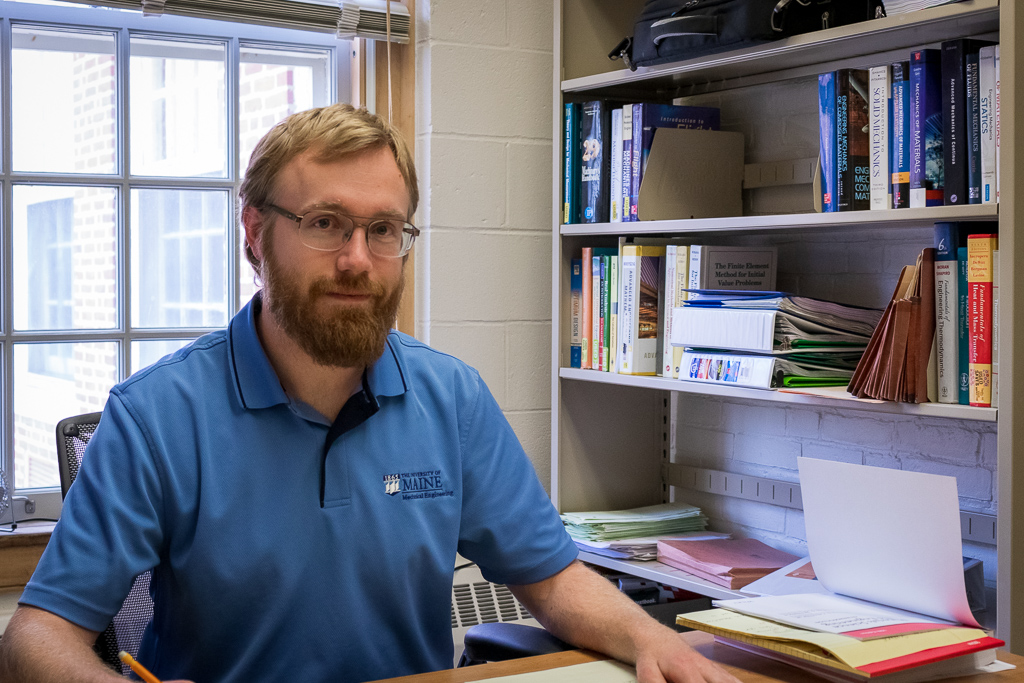
Joy’s research focuses on finding solutions to complex mathematical problems
Mathematical tools used to create items such as vacuums, cars and skyscrapers, make the design process streamlined, less expensive and safer.
However, with advances in modern science increasingly pushing boundaries, these tools need to be adapted in order to keep up – and avoid potentially costly mistakes.
The finite element method is a commonly used technique to solve mathematical problems.
However, well-established equations used by designers and computer models have limitations.
They don’t account for imaginary numbers (known as complex-variables).
During his summer research project, Aaron Joy, visiting assistant professor of mechanical engineering, aims to extend the finite element method to solve complex-variable problems.
“Variationally consistent finite element formulations for complex-valued differential equations” examines the finite element method’s scope and will test equations to formulate a base of ground rules for consistency.
Joy became interested in this work as an undergraduate at the University of Kansas. He credits inspiring teachers and advisers with spurring his fascination for solving complex-variable problems.
“My work right now is trying to extend current methods and compute solutions to problems that are [currently] impossible to solve – like equations that describe the motion of a fluid,” he says.
Today, rules in most design processes only apply to real numbers. Real numbers are those we use normally; positive or negative, large or small, whole numbers or decimal numbers.
But modern innovations in electronics, optics, sensors, circuity, lasers, electromagnetics, quantum mechanics and advanced chemistry use imaginary numbers; numbers that when squared give a negative result.
Current computational infrastructure is not up to the task of solving for these problems.
Joy hopes his research, funded by the Summer Faculty Research Fund Program, will continue past the exploratory phase in the fall to involve students using computer modeling and simulations.
The goal is to find one method that could solve any problem using real or imaginary numbers.
According to Joy, other researchers’ efforts are focused on seeking methods for single-use, specific problems – not a cost-saving or efficient use of innovators’ time.
He seeks to find an overarching method in a single, well-contained framework that can be generalized and used by all future innovators.
Media Contact: Christel Peters, 207.581.3571
